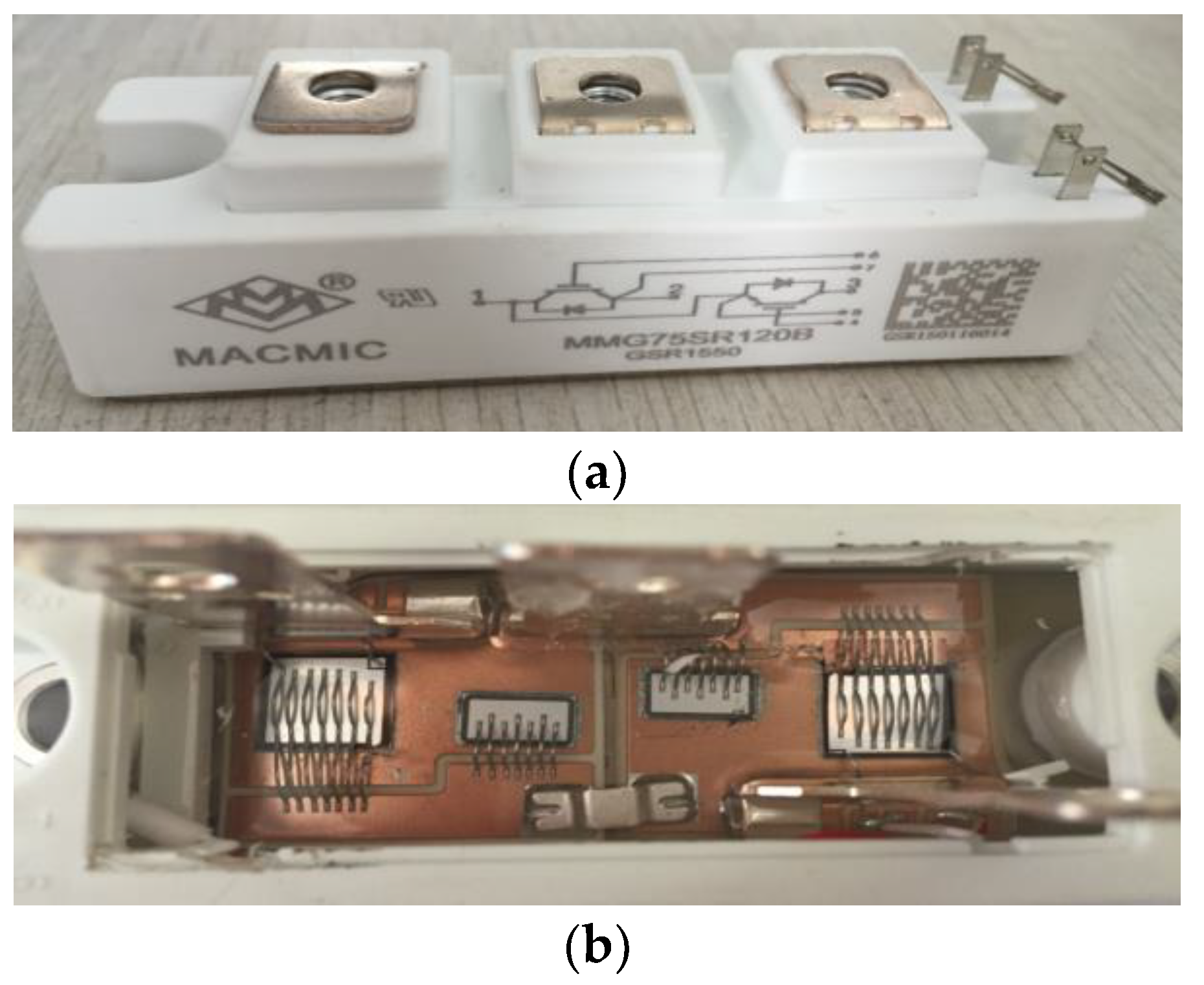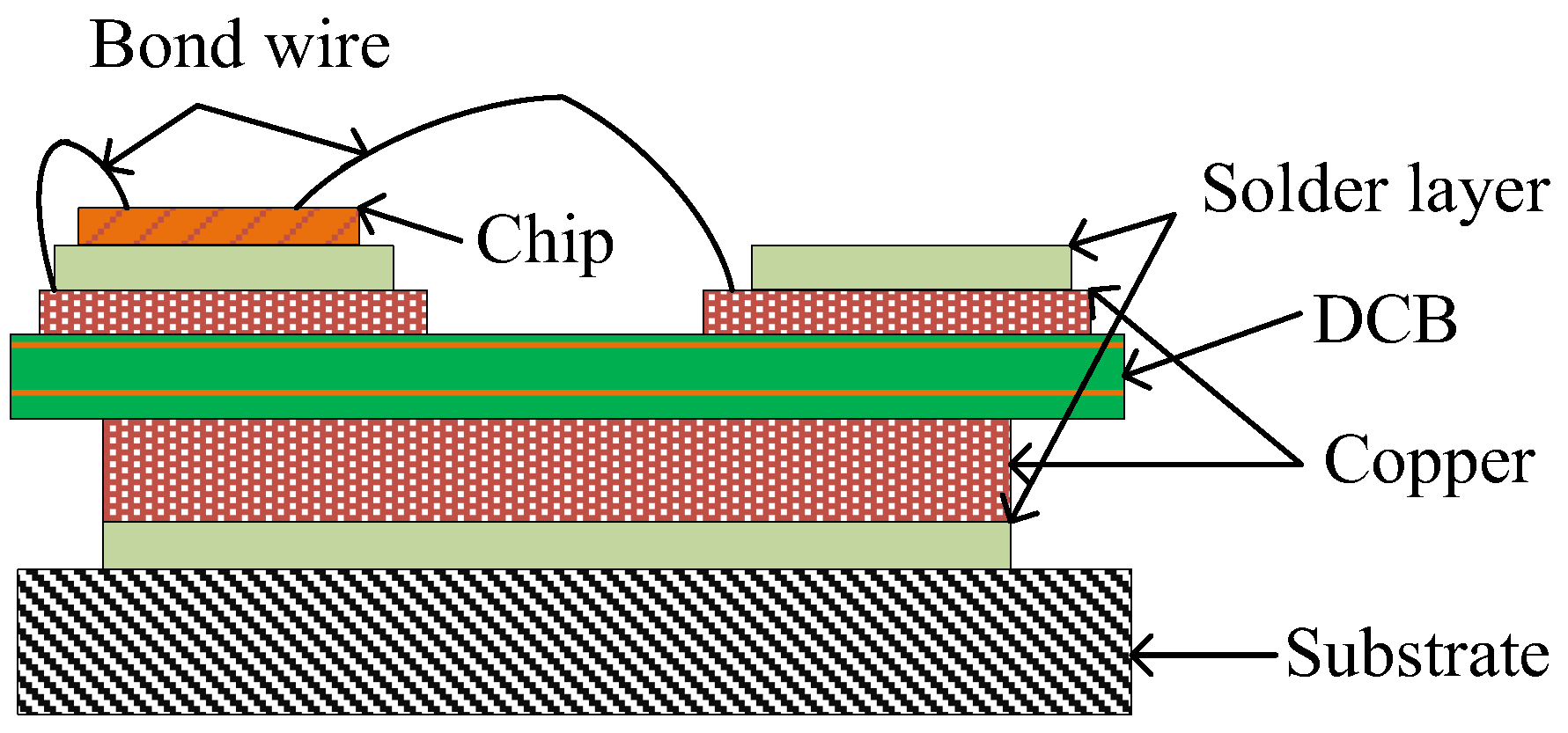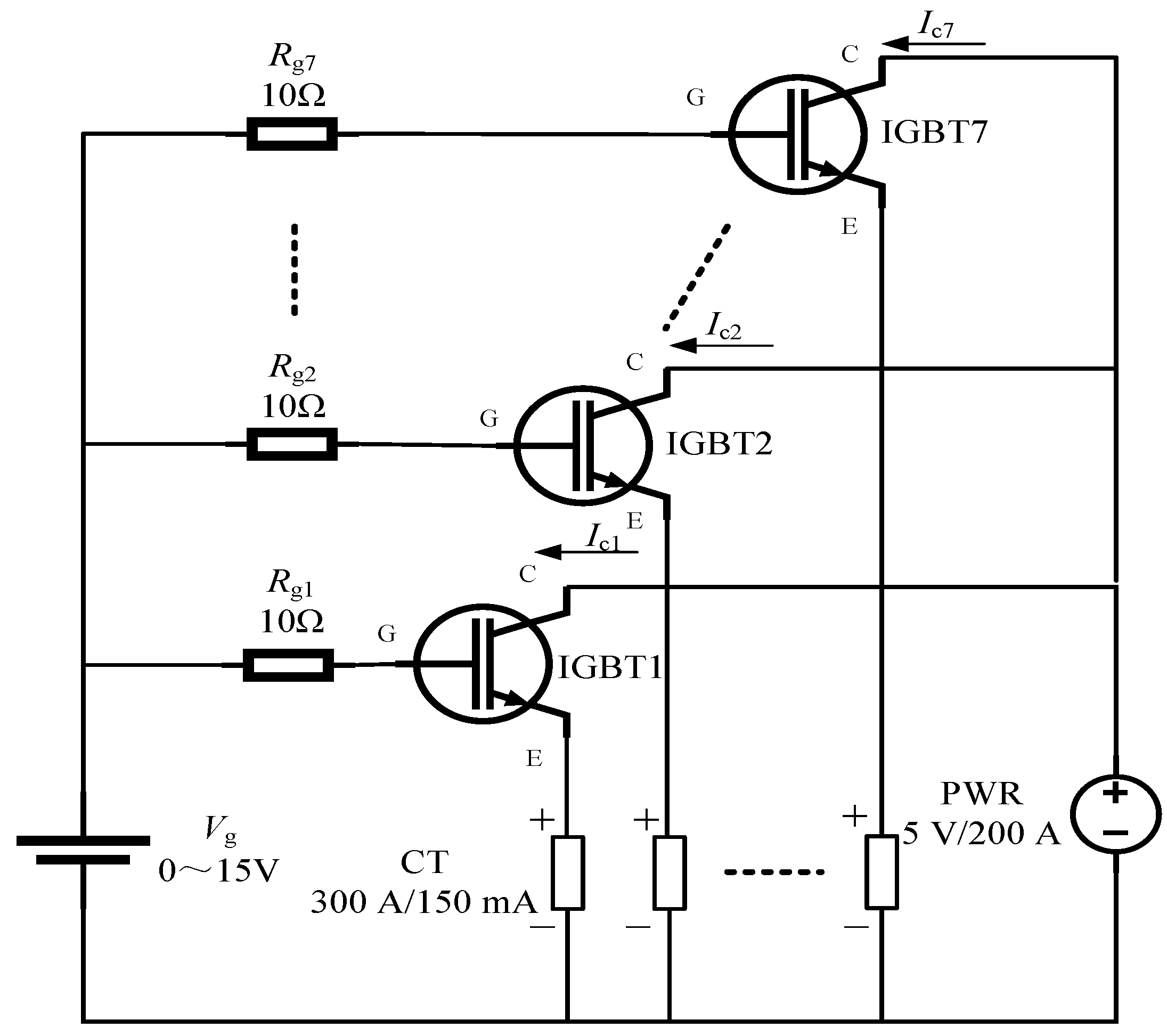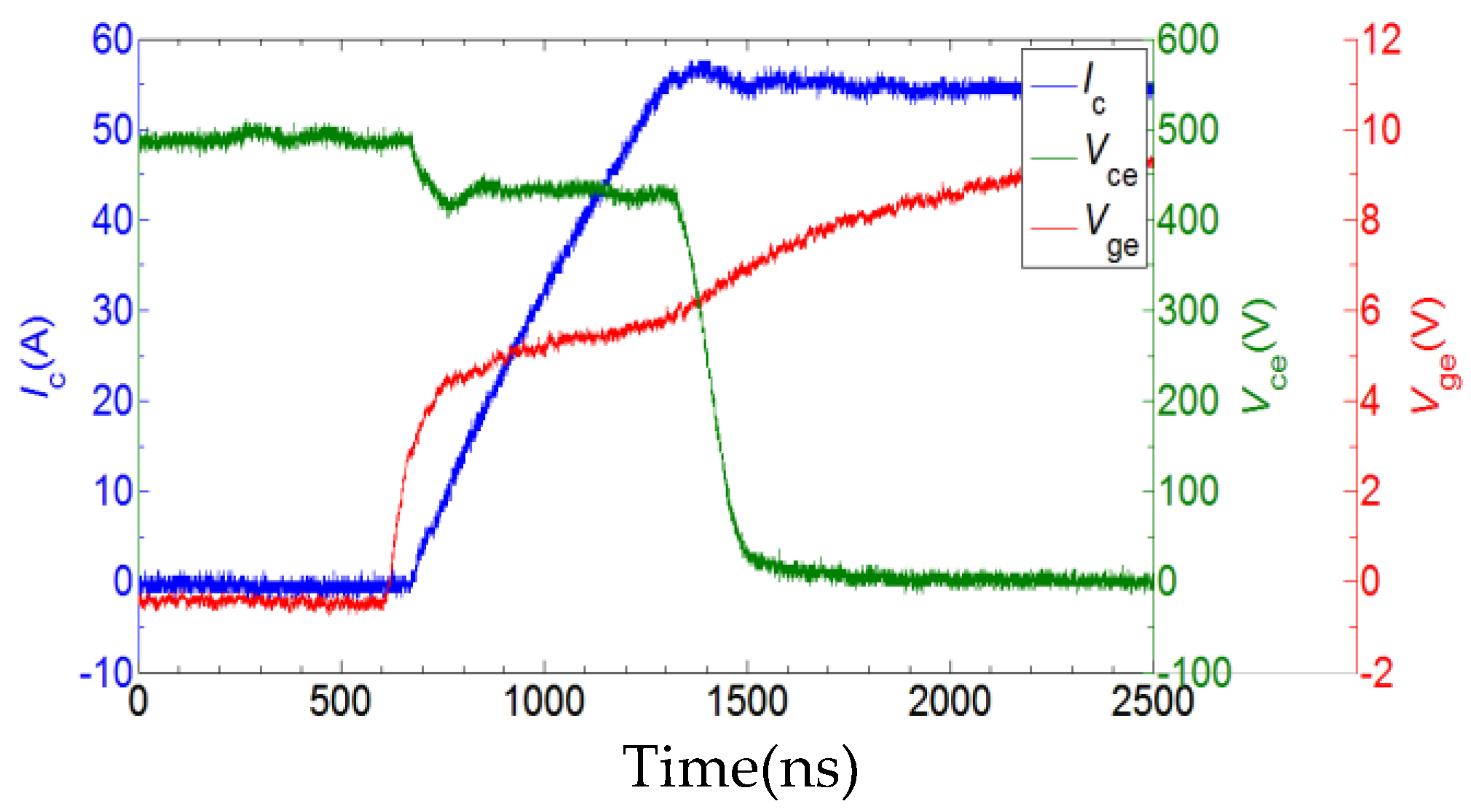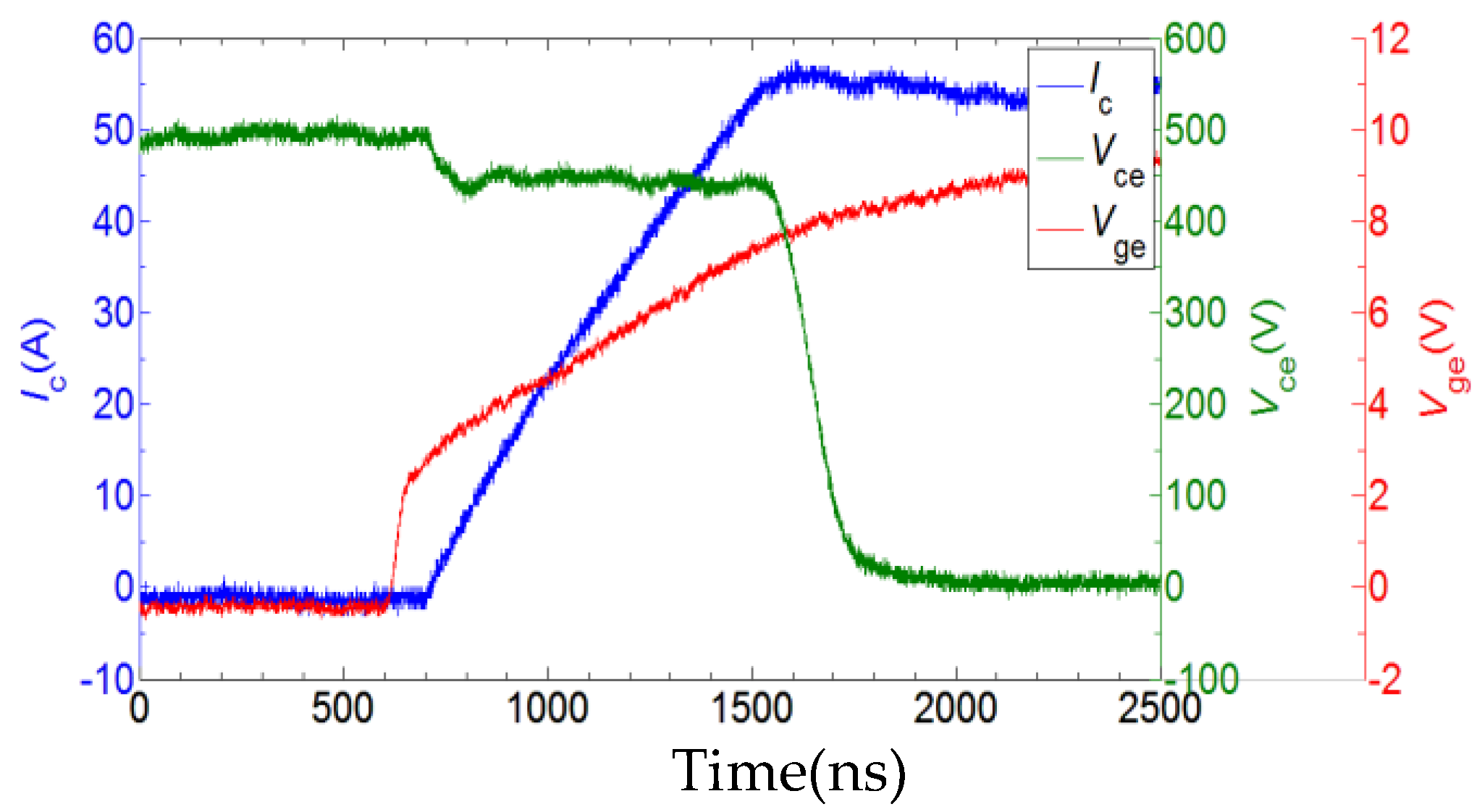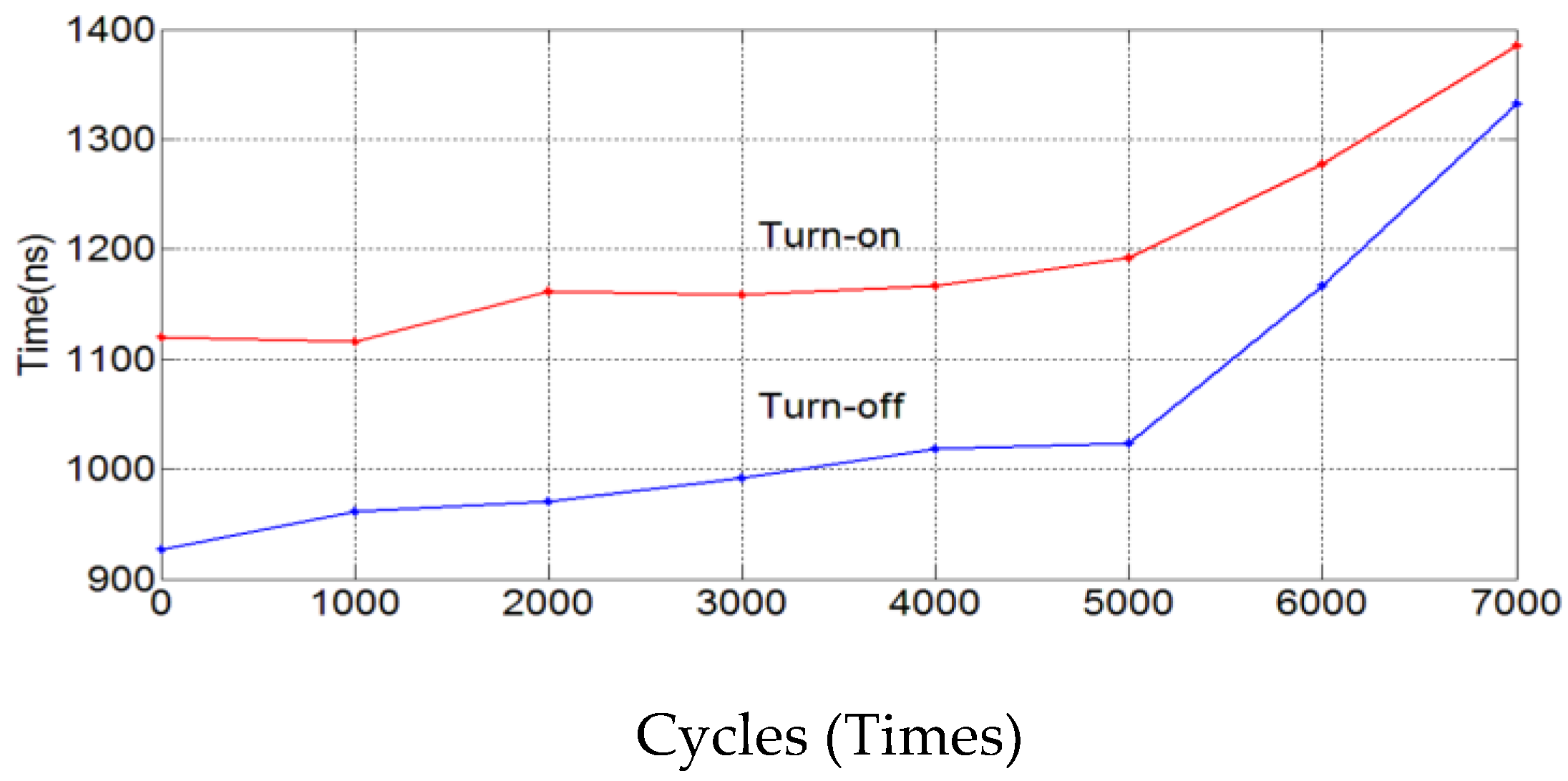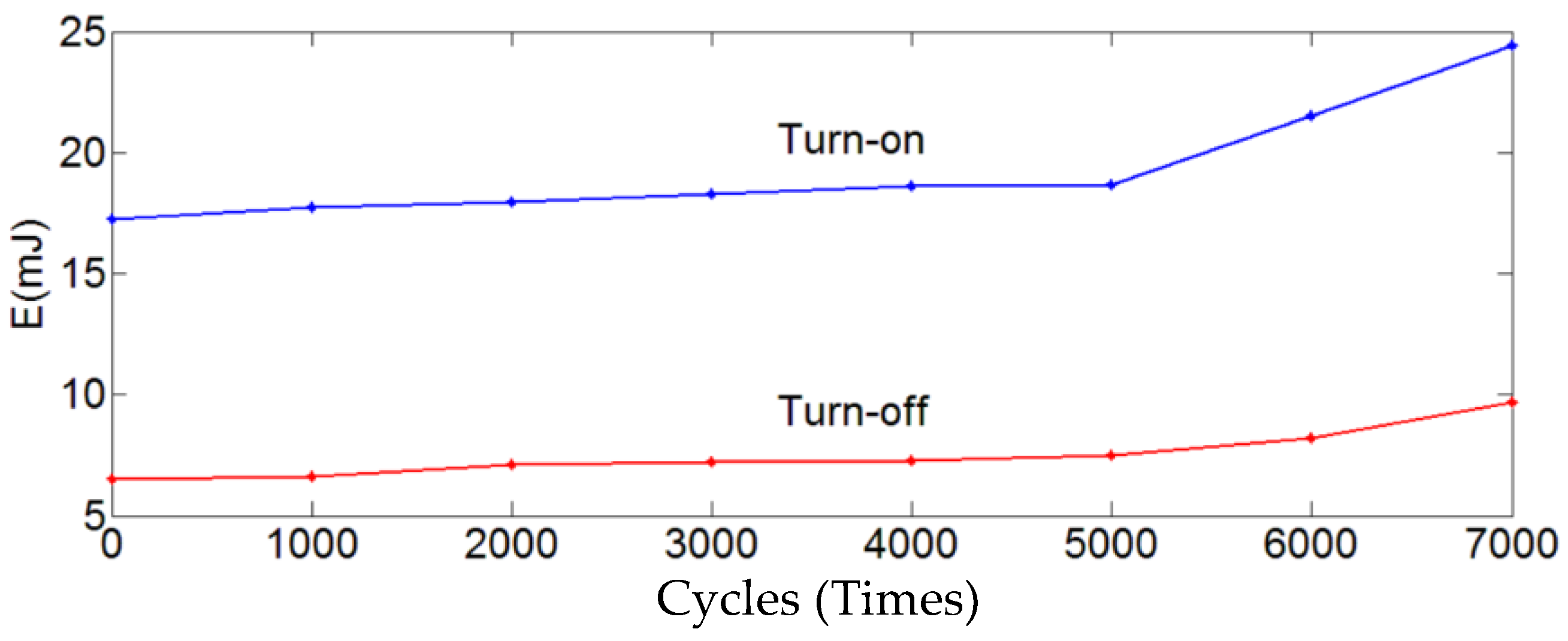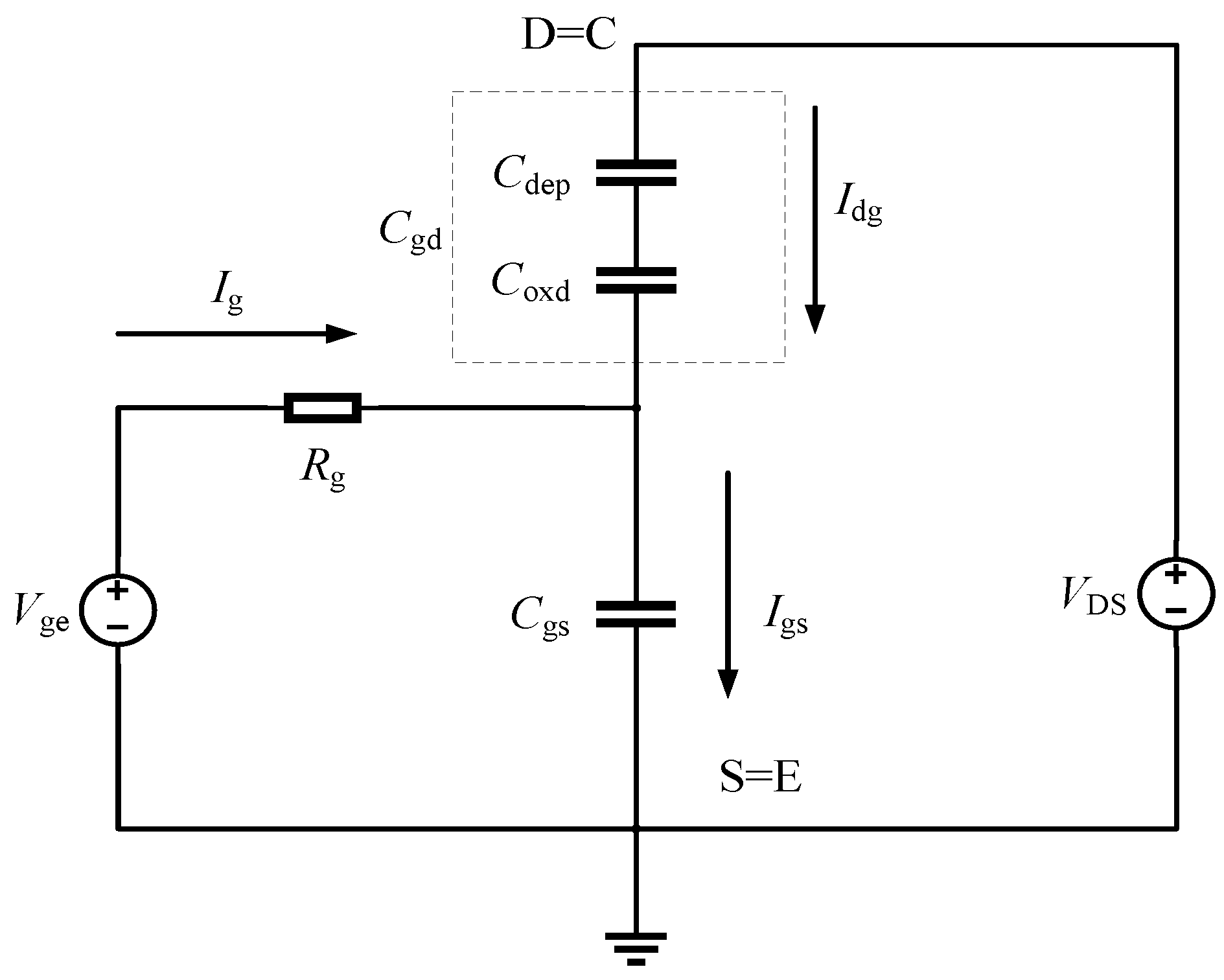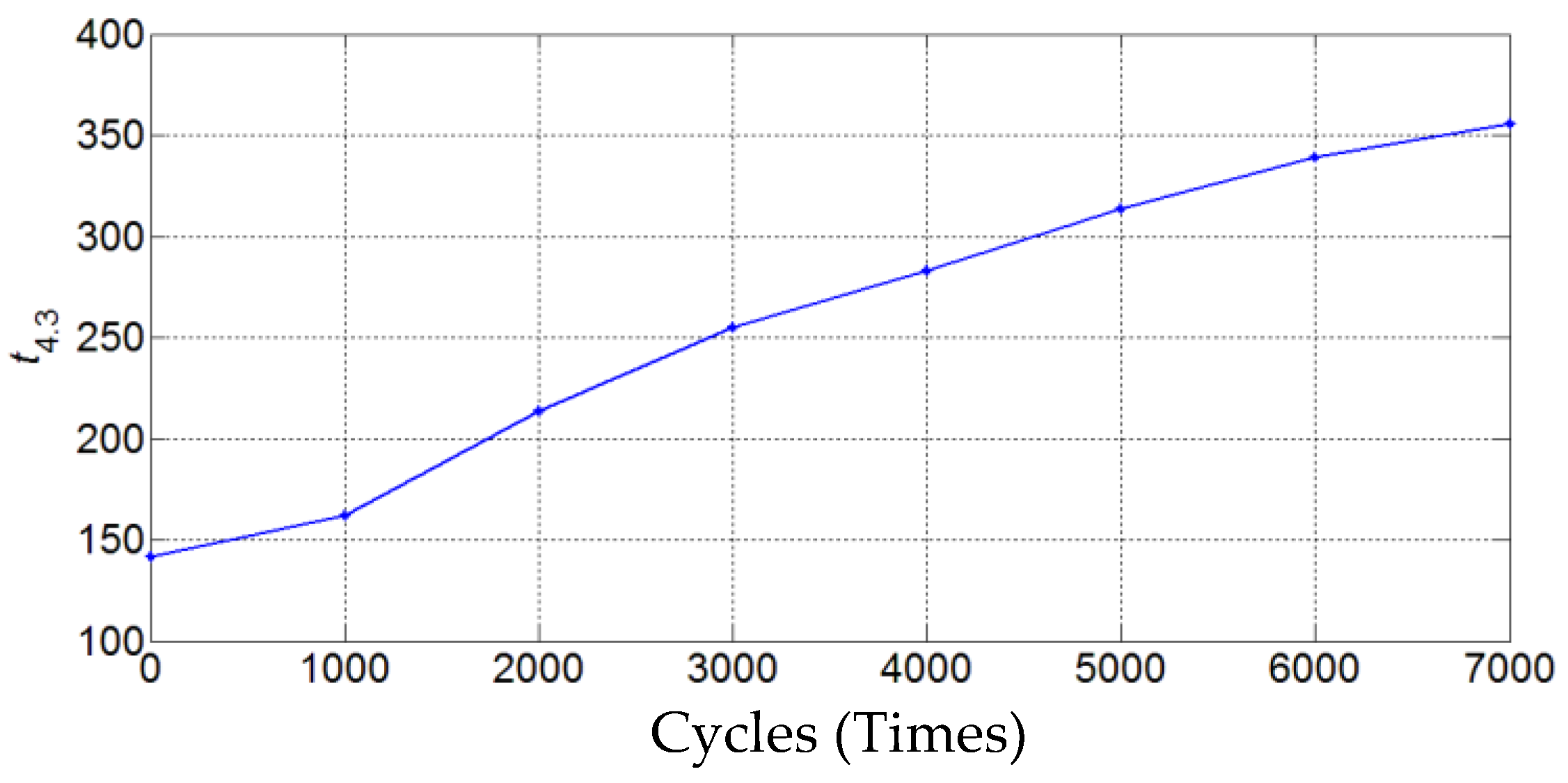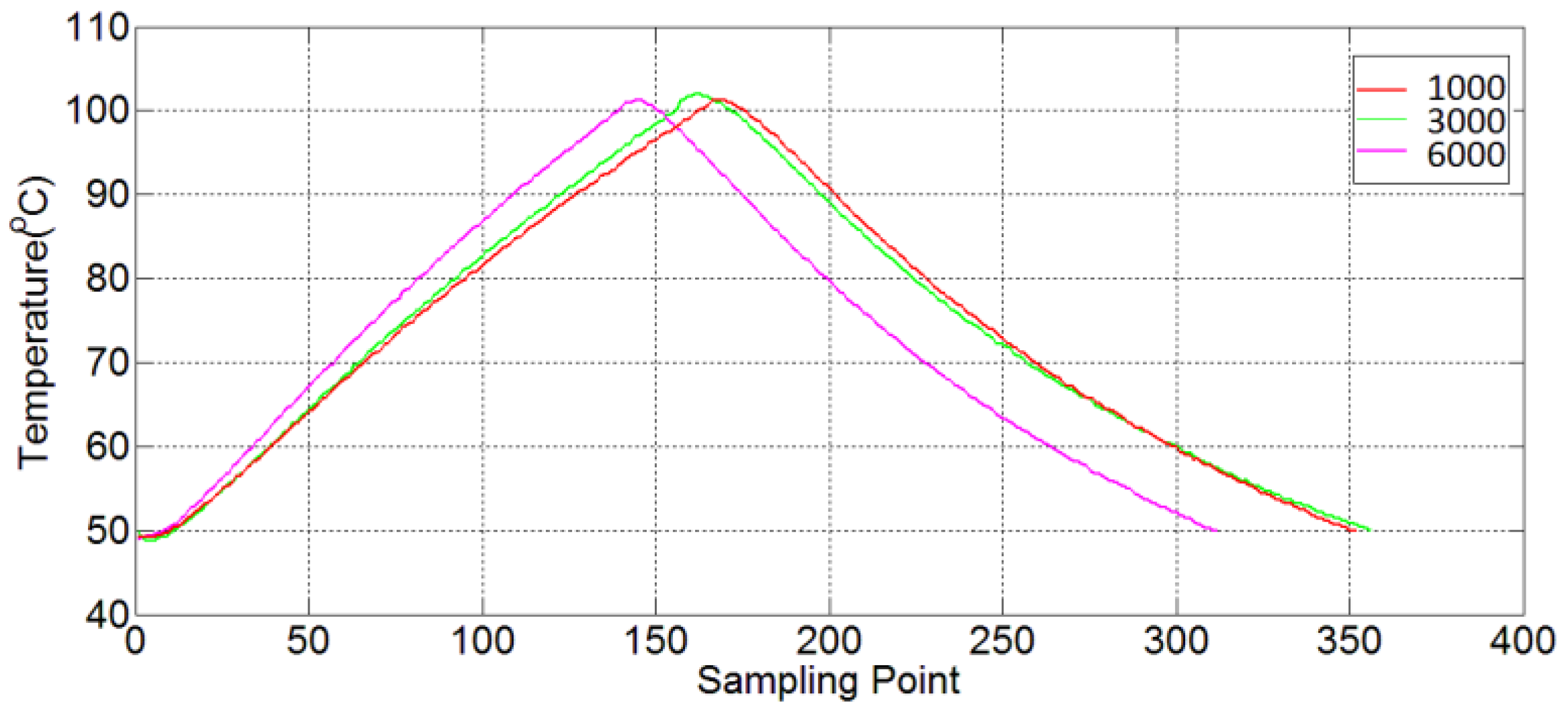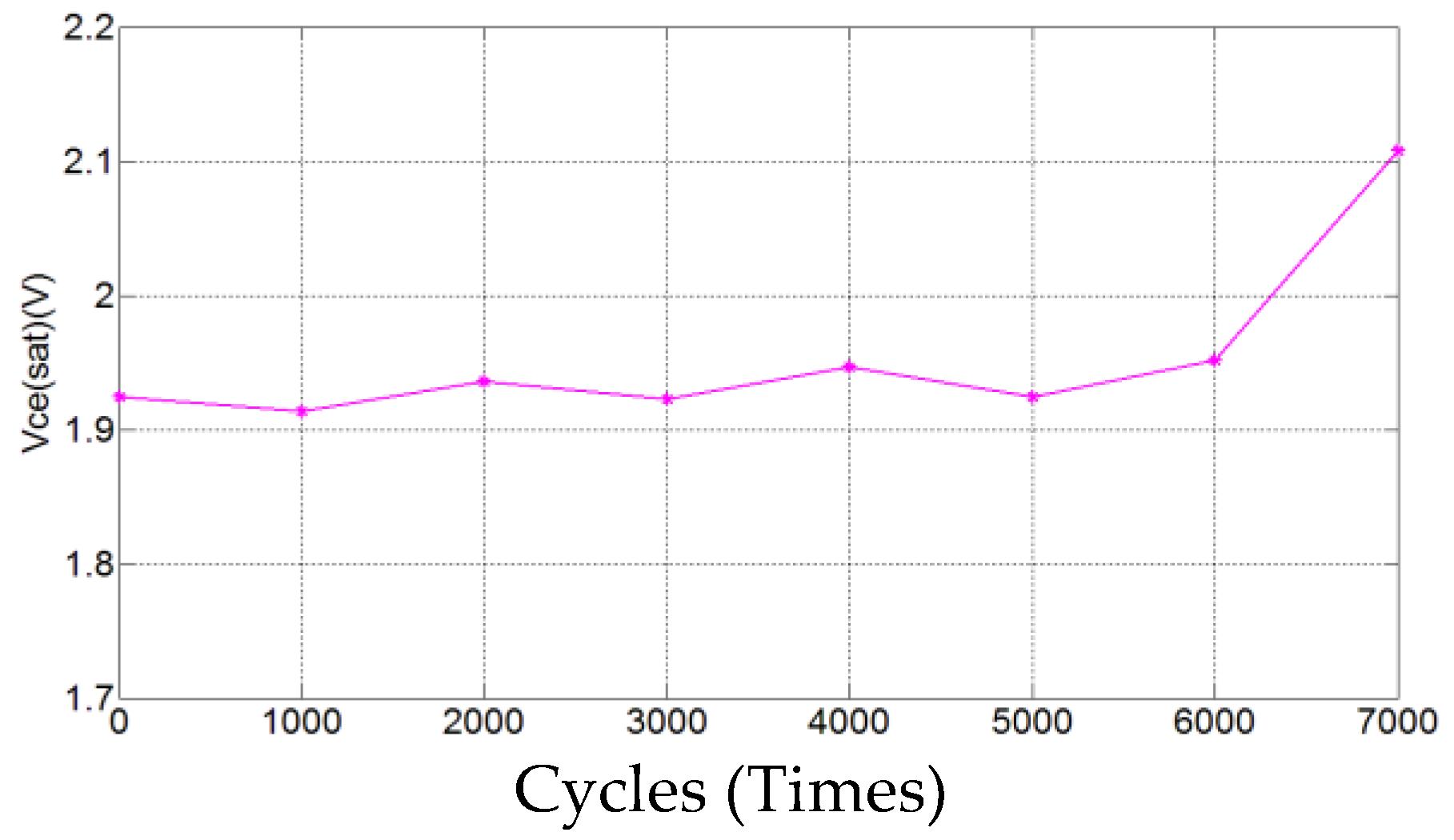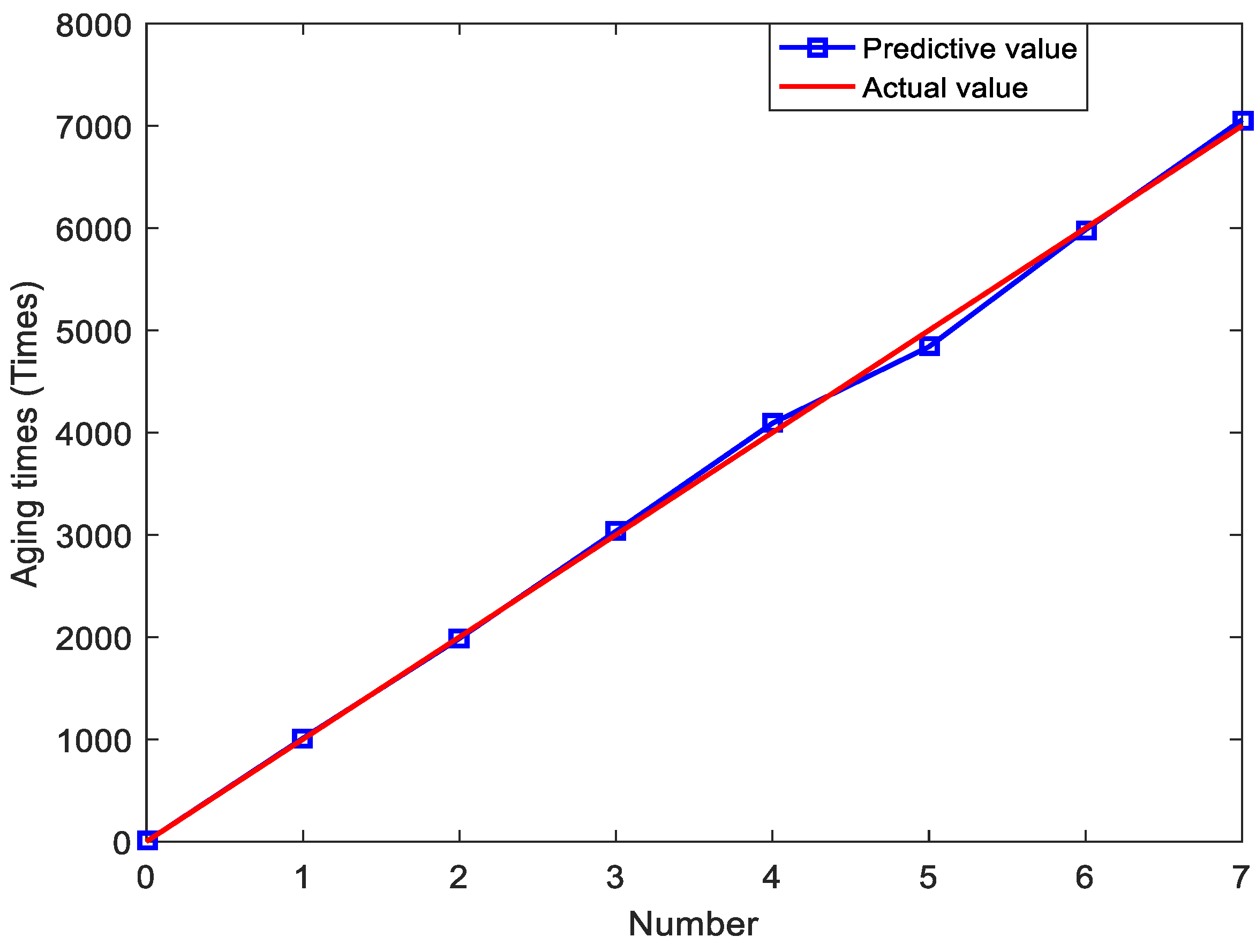1. Introduction
With the development of science and technology, the application of power electronics technology is extensive, and the insufficient energy supply and environmental pollution are becoming serious. Non-renewable energy sources such as coal, oil, and natural gas will generate a large amount of pollutants, which is the main cause of acid rain and global warming. At present, the world is striving to explore new energy sources and seek a path of sustainable development. Human beings have entered the new energy era. The continuous expansion of the application scope of new energy is an important means to promote the sustainable development of the whole society. The new energy sources mainly include wind energy and solar energy. These energy resources are extensive and have little environmental pollution. More importantly, compared with non-renewable energy sources, new energy sources such as wind and solar energy are inexhaustible. Replacing non-renewable energy with new energy sources can not only reduce environmental pollution, but also better realize the sustainable development of human society. At present, new energy industries such as wind and solar energy are developing rapidly, and their application range is increasing; therefore, it is important to improve the level of new energy management. Insulated Gate Bipolar Transistor (IGBT) power module is one of the most important components of the power conversion and transmission device, which is widely used in converters in new energy power generation systems. Therefore, improving the reliability and stability of new energy power generation systems will further expand the application scale of new energy sources, which can help to manage the global ecological crisis, improve people’s quality of life and promote the sustainable development of society [
1,
2].
However, a failure of the power module leads to the interruption of power electronic systems and even has the potential to cause severe economic loss and safety accidents [
3]. Therefore, the power module reliability has received increasing attention from the equipment manufacturers and equipment managers [
4]. Traditional methods to improve the power module reliability included improving the design and manufacturing process, such as improving the materials, enhancing the heat dissipation and controlling the operating conditions of the power electronic equipment. The cost savings and improvements allowed by traditional methods are limited with the development and maturity of power electronics technology. Currently, IGBT power module reliability is focused mainly on state monitoring [
5,
6,
7], life prediction and reliability modeling [
8,
9]. The rapidly developing areas of state monitoring and aging state assessment are effective ways to improve the IGBT modules reliability.
To achieve early detection of abnormal devices and improve the power module reliability, the power module’s external characteristic parameters are measured using a variety of detection methods, which are combined with historical data to evaluate whether the current working state is normal. Xiang et al. [
10] monitored several measurable quantities available for IGBT condition monitoring: the module current temperature, the output current harmonics, the phase-leg resistance and the dv/dt values associated with the rising and falling edges of Pulse Width Modulated output voltage, which is to monitor the system for normal operation. The above parameters are easy to measure. Ji et al. [
11] use a temperature sensor and a current sensor to establish a condition monitoring system inside the electric vehicle to monitor the aging of the solder layer of the IGBT, thereby further monitoring the operation of the vehicle. Li et al. [
12] established a switching loss prediction model based on the support vector machine optimized by improved chicken optimization algorithm, which compares the real switching loss with the prediction results of the new model and the other two models. The results indicate that the model has higher convergence precision and prediction accuracy and can predict switching losses accurately. The above literature describes three methods of IGBT condition monitoring, namely state monitoring and evaluation methods based on device surface features, sensor-based state monitoring and evaluation methods, and model-based state monitoring and evaluation methods.
The power module’s internal structure changes with aging, potentially exhibiting an increase of the IGBT collector-emitter voltage drop Vce(SAT), which is caused by thermal stress and welding layer damage, and an increase of the junction temperature Tj, which is caused by aging of the welding layer and increases in the power loss.
In the literature, Choi et al. [
13] proposed a real-time collector-emitter voltage drop measurement circuit by monitoring the collector-emitter voltage in which the failure condition is detected. Bęczkowski et al. [
14] proposed a
Vce online monitoring circuit, which accurately predicts IGBT failure. Both of the above studies make use of the characteristic that the on-state voltage drop of the IGBT suddenly rises before its failure, and the failure of the IGBT is judged by monitoring the change of the on-state voltage drop. However, the changing collector-emitter voltage drop of the power module depends on the different aging periods. There is no detectable change of collector-emitter voltage drop in the early stages, but a sudden increase occurs before a failure. This study proposes that this proposed method is effectively monitoring the power module failure but not its aging condition. Hence, there is a need to integrate and monitor this aging condition in the process.
Still, Li et al. [
15] studied the influence of the junction temperature on the aging states of the Power module, and a calculation method of junction temperature is proposed. The junction temperature prediction value of this model is compared with the junction temperature prediction value based on the particle swarm optimization support vector machine model. It is proved that the proposed model has better calculation accuracy and the proposed model is more innovative. Riedel et al. [
16] introduced the viewpoint that failure of the welding layer is a common failure of the IGBT power module. The degradation effect of thermal dissipation in the power device aging process was analyzed and a method to monitor the thermal characteristics was proposed. Compared with the previous methods, the method can identify the abnormal thermal characteristics of the device earlier, the convergence is fast and the calculation amount is small. However, this proposed method requires accurate measurement of the junction temperature, a requirement that undoubtedly damages the power module package structure and increases costs. Denk et al. [
17] studied the state monitoring of the thermal characteristics. Changes of thermal characteristics before and after the aging of the power module through thermal cycle tests were analyzed, including changes in temperature and thermal resistance and thermal capacity. The result showed that the variation of the temperature amplitude is related to the failure of the weld layer during the thermal cycle and that the minimum temperature is associated with the cooling system failure. The state monitoring system is based on this principle and solves the problems associated with limited time and accuracy but also faces the problem of performing junction temperature measurements.
As mentioned earlier, the aging of the power module is related to many aging state parameters, and a single parameter cannot accurately evaluate the IGBT aging state. The junction temperature is not straightforward to obtain accurately, and most indicators exhibit different trends in different aging stages. In the case, there is no measurement of the junction temperature, the integrated attribute of the power module state monitoring has been calculated using kernel principal component analysis (KPCA) with the gate switch signal Vge, collector-emitter voltage Vce, collector current Ic and case temperature Tc. In the present study, first, the measured Vge, Vce, Ic and Tc are used to calculate the parameters that are related to the junction temperature, such as the switching loss, collector-emitter voltage drop and temperature rise rate. Then, these parameters are centered, and their dimensions are reduced using KPCA. The integrated attributes after the analysis and calculation can reduce the computational load and improve the accuracy of the state monitoring, and the aging state of the power module is accurately evaluated by the multi-dimensional grey model using the integrated attributes. Thereby, the monitoring and evaluation of the operating state of the power module is realized, and the reliability of the operation of the entire new energy system is improved.
The rest of this study is organized as follows:
Section 2 covers Materials and Methods, which establishes the temperature cycle accelerated aging test, introduces the KPCA and the modeling process of grey model;
Section 3 is the Results section of this paper, which provides the results of the state monitoring, the three comprehensive characteristic vectors using KPCA and IGBT aging evaluation results obtained by using the grey model.
Section 4 provides the Discussion of this article, highlighting the outstanding contributions of this paper compared to previous studies.
Section 5 gives the Conclusions of this paper.
2. Materials and Methods
This section introduces the Power module failure mechanism, ageing test platform, the KPCA method and the grey model modeling process required for data processing. The specific research route of this paper is shown in
Figure 1.
2.1. IGBT Power Module Failure Mechanism
The failure mechanism of power modules is the basis of condition monitoring, and the failure rate of the converter equipment caused by the failed Power module is relatively high [
18]. In applications, the power modules are typically combined with a diode to form a converter circuit that achieves a certain function. A double-packaged IGBT power module is showed in
Figure 2.
The module package structure provides the function of the IGBT chip and the external connection, heat transfer, insulation and other functionalities. Therefore, the failure of the Power module involves multiple factors, such as electrical, thermal, and mechanical factors, among other modes. Such failure is a result of interaction between the internal fatigue accumulation and the external operating environment. Previous reports have reviewed the failure mechanisms of Power modules [
19]. According to the surveyed failure causes, failure of the power module is subdivided into failure of the package and failure of the chip.
We first address package-related failure. The profile of a Power module is shown in
Figure 3, illustrating the multi-layer packaging structure. Due to the special structure of the Power module and the difference between the thermal expansion coefficients of different packaging materials, the module is expected to ultimately fail from bond wire fracture or from a temperature increase after the material fatigues from long-term thermal shock. If cracks and voids are generated in the welding layer or bond wire during the manufacturing process, fatigue of the packaging material is accelerated.
Figure 2 and
Figure 3 show that the IGBT chip in the module is connected to the port through an aluminum wire, which is one of the weakest links in the power module. Bond wire failure is typically caused by thermal stress, mechanical stress, bonding pressure or cracks on the interface between chips. With continuous power cycling, the effect of the bond wire binding continues to accumulate and spread and ultimately surpasses the welding capacity, leading to welding bond wire liftoff.
Chip-related failure, the second subclass of module failure, is a process of accumulation and development. The main reasons for the failure of the chip are electrical stress, static charge, the latch-up effect, and hot carrier injection. When failure occurs, the external characteristics of the power module are altered. State monitoring technology can capture and analyze the external characteristics to determine the health status of the Power module. Ciappa et al. [
20] noted that an increase in
Vce (SAT) is an important indication to evaluate the failure of an IGBT; a 5% increase has been used as the criterion of failure. This test also uses this standard to evaluate the failure of the power module.
2.2. The Temperature Cycle Accelerated Aging Test Platform of IGBT
In the test, seven groups of power modules are connected in parallel to realize the accelerated aging of a Power module. The power module life is as long as 10 years; thus, age testing under normal operating conditions is unrealistic. Therefore, this test consists of an accelerated thermal cycle aging test using an IGBT chip from the MACMIC Company (the company is located in ChangZhou, JiangSu, China), whose model is MMG75S120B6HN and whose rating is 1200 V/75 A. The test circuit is shown in
Figure 4.
Figure 4 indicated the IGBT denotes the tested power module; PWR is the programmable power supply (5 V/300 A);
Vg is the gate signal (0–15 V) provided by the programmable power supply;
Rg is the series resistance of the G pin (10 Ω/2 W); and CT is the current transformer (0–300 A). The test procedure is as follows:
- (1)
Test the new IGBT device to measure the dynamic waveform of the switch as characterized by Vge, Vce, and Ic, among other parameters.
- (2)
Perform the thermal cycle aging test of the power module using the following test conditions: the supply voltage (Vdd) is 75.00 V, the clamping voltage (Vc1) is 450.00 V, the collector current (Ic) is 60 A, the gate pulse width (Pulse) is 20.0 µs, the gate voltage (Vge) is 15.0 V, and the gate series resistance (Rg) is 10 Ω. After the circuit is turned on and the temperature rises to 100 °C, the circuit is cut off, and the module is cooled using a fan; when the temperature drops to 50 °C, the circuit is turned on again.
- (3)
After every 1000 cycles, test the power module again to obtain the attributes listed in step (1).
- (4)
When the power module fails, stop the test.
During the test, the number of cycles, number of samples, running time, Ic, Vce, Vge and case temperature in each power module and each cycle are recorded. In addition, the dynamic performance of the power module is tested after every 1000 cycles. The purpose of the thermal cycling test is to assess the power module’s ability to withstand short-term temperature changes considering the thermal matching performance between various structural materials. The defects of the power module exposed the defects in package hermeticity, bond wire failure, weak tube core welding, silicon cracks, and thermal defects of the PN junction.
2.3. Kernel Principal Component Analysis
KPCA is an effective tool for dimensionality reduction and is a nonlinear generalization of the principal component analysis [
21]. The proposed method is used to reduce the feature parameters of the IGBT module of the aging process.
The input of the system is specified using the matrix , implying that the number of data sets is N and the dimension of each data set is d, representing d attributes. The goal of the KPCA is to use a K-dimensional data set to represent the original d-dimensional data.
is defined as a mapping, in which the
F is a representation of the Hilbert functional space.
implements the mapping from the input space to the feature space. In the feature space, this study assumed that the mapped data is centered. The covariance matrix is defined as follows.
This study obtained the performing eigenvalue decomposition
where,
is a characteristic value of
, and its feature vector is
, which is expanded into the following form.
where,
.
Defining
, then
, in which
. Therefore,
is obtained by calculating the eigenvector
αa of matrix
K. In the projection of principal components, only matrix
U is needed. Assuming that the new data is
t, the projection of
t in the
direction is
If the covariance matrix is not centered, then the matrix
K is centered to
KC, thus avoiding the computation of
. Assuming that
, this study found that
;
is an
matrix, whose elements are all
:
The contribution rate of the principal component is , and the cumulative contribution rate (CCR) of the first k principal components is .
The size of the contribution rate of the principal component represents the amount of information carried by the principal element. If the CCR of the first k principal components reaches 90%, then the k principal element can represent 90% of the information from the original data.
2.4. Establishment of Grey Theory Model
This study presented the integrated attributes obtained in different aging states belonging to the case of less data and poor information, while the grey theory is a method to research the problems of less data, poor information and uncertainty. The grey theory is usually used to study small samples or uncertain systems with some information known and some information unknown [
22]. Through the change and generation of the known information of the original part, the law of grey theory is mined to realize the description and prediction of the future of the system. Therefore, a multi-dimensional grey theory model is established to predict the aging number N, and then the aging state of the power module is evaluated. The modeling process of GM (1,
n) is as follows
Set the original sequence to have
attributes, and each attribute corresponds to the sequence of
groups data.
The original sequence
is accumulated to generate a new data sequence
Let
be a generated sequence from the nearest mean of sequence
Then, the data matrix
and the vector matrix
expressed as follows
The parameter identification package
is
The prediction model is expressed as
The accuracy error of the model is presented
According to the above process, because the input variables obtained in this paper are three comprehensive characteristic vectors, the GM (1, 3) is built in Matlab 2016a, which lays a foundation for the assessment of the aging state of the IGBT in
Section 3.3.
4. Discussions
Achieving sustainable development is the permanent theme of human society. The new energy industry is an important road to achieving sustainable development of mankind, and it is changing every day. Effective use of new energy sources and improvement of the new energy management system are of paramount importance. As an important core component in the converter, IGBT plays a very important role in the new energy power generation system. Condition monitoring of IGBT is an important aspect to improve the reliability of IGBT. In the previous methods of IGBT condition monitoring, no matter which method is used, a specific electro-thermal parameter is selected as a parameter for monitoring the aging state of IGBT, such as, collector-to-emitter voltage, switching loss, junction temperature, and case temperature. Monitoring the specific state parameter can evaluate the aging state of the IGBT, but there are two shortcomings: (1) The change of the single parameter is difficult to accurately express the failure condition of the IGBT. For example, the collector-emitter voltage will rise suddenly before the IGBT fails. Although this feature can be used to monitor whether the IGBT module is ineffective, it is not obvious in the previous period, so it cannot fully reflect the aging state of the IGBT. (2) Sensor-based condition monitoring and model-based monitoring have large errors. Sensor-based condition monitoring requires the installation of sensors inside the device, which will destroy the package structure of the IGBT and affect measurement accuracy. While the model-based condition monitoring method avoids destroying the package structure of the module, the accuracy of the model has a great influence on the monitoring results. In view of the shortcomings of the above research, this paper builds a temperature cycle aging test platform and proposes a KPCA-based condition monitoring method, which increases the state parameters of the monitored IGBT to five and greatly improves the level of IGBT state monitoring. Using the KPCA method reduces the dimension of the parameters, while alleviating too many data parameters, minimizing information loss and improving the visualization of the data. Three comprehensive characteristic vectors are also beneficial to the aging state evaluation of the IGBT using the grey model. The comparison with the actual aging times also shows that the three sets of integrated variables obtained in this paper are accurate and effective, and can reflect the aging state of the IGBT, which proves the effectiveness of the method.
In the field of actual new energy generation, there are multiple IGBT modules in the converter, and the healthy operation of each module is very important. Therefore, monitoring the state parameters of multiple IGBTs is beneficial to comprehensively grasp the operating state of the IGBT. Once an abnormality of a certain parameter is found, the fault can be found in time to avoid the expansion of the fault and further economic loss. Therefore, the work of this paper can not only evaluate the aging state of IGBT, but also quickly identify the cause of IGBT failure through an abnormality of a certain parameter, which is of great significance for practical industrial applications, and is conducive to the promotion and application of new energy and sustainable development.
5. Conclusions
This study improves the state monitoring capability and effectively evaluates the aging state; the proposed method monitors the working state of the power conversion device in the new energy system and predicts the future working state, which is beneficial to the enterprise to enhance its regulation and management capabilities in the new energy system. After research and analysis of the results, this study draws the following conclusions:
(1) This study analyzed the parameters affecting the aging state. To obtain these attributes, this study is necessary to measure the external characteristics of the power module without measuring the junction temperature, the package of the power module does not have to be destroyed; therefore, the accuracy of the state monitoring is improved and the cost is reduced.
(2) This paper uses KPCA to reduce the dimensionality of multiple variables, which improves the visualization of IGBT power module status monitoring data. It is found that the KPCA using the polynomial kernel function is the best because it compares the cumulative contribution rates under different kernel functions. The integrated attributes obtained by this method can more fully reflect the aging state of the power module.
(3) The IGBT temperature cycle aging number N obtained by the grey model is compared with the actual value, and the error is only 1.176%, which indicates that the aging state of the IGBT is evaluated by the number of temperature cycle aging times N, and the fault conditions of IGBT power module can be further judged by the aging state.
The work done in this paper is to improve the monitoring level of IGBT and thus improve the reliability of IGBT.One remaining aspect to reflect upon consists in how to further improve the monitoring level and achieve an accurate evaluation of the aging state of the IGBT. In the future, it will be an important task to collect a large amount of IGBT state monitoring data at more sampling points and then use the intelligent algorithm with better prediction accuracy to evaluate the aging state of IGBT.

